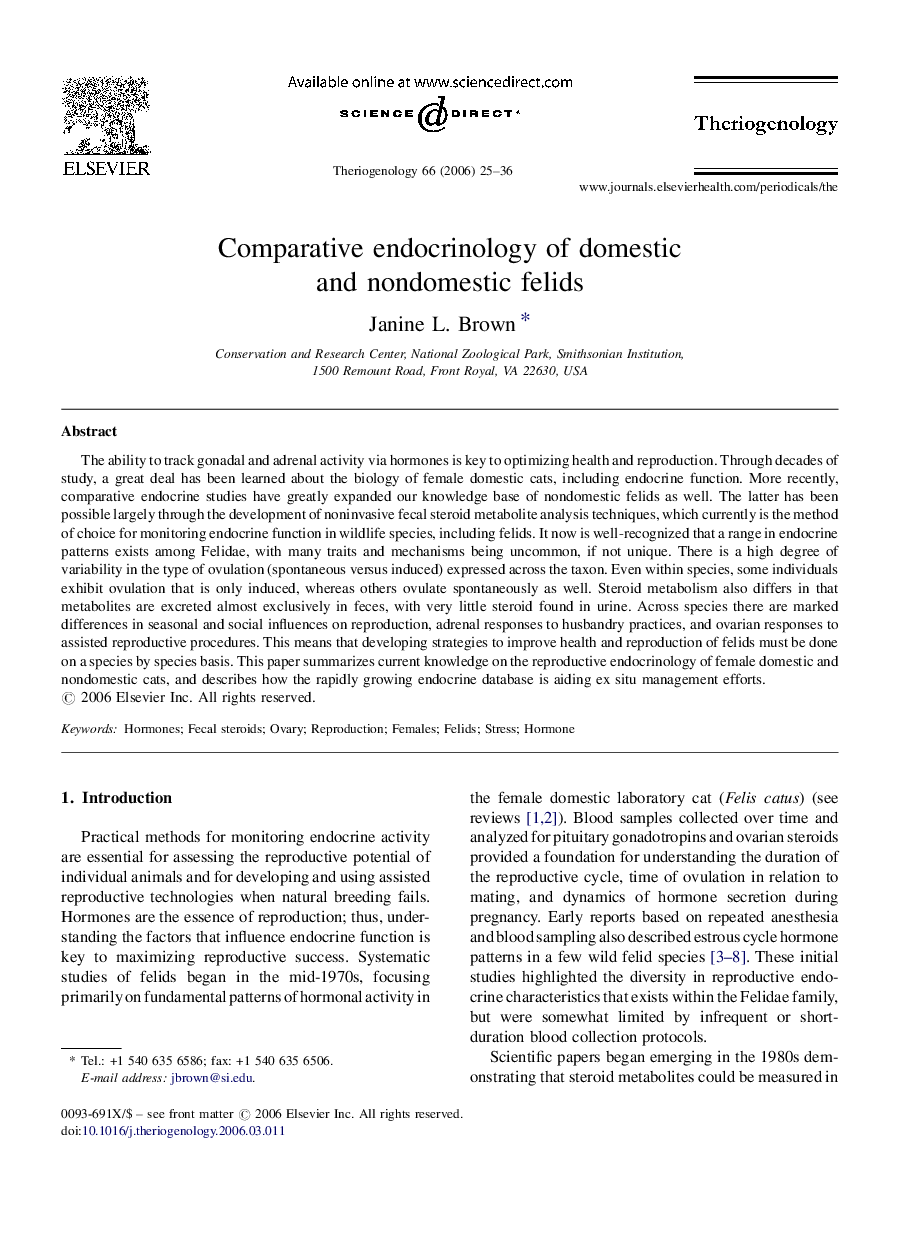| کد مقاله | کد نشریه | سال انتشار | مقاله انگلیسی | نسخه تمام متن |
|---|---|---|---|---|
| 2097142 | 1082198 | 2006 | 12 صفحه PDF | دانلود رایگان |

The ability to track gonadal and adrenal activity via hormones is key to optimizing health and reproduction. Through decades of study, a great deal has been learned about the biology of female domestic cats, including endocrine function. More recently, comparative endocrine studies have greatly expanded our knowledge base of nondomestic felids as well. The latter has been possible largely through the development of noninvasive fecal steroid metabolite analysis techniques, which currently is the method of choice for monitoring endocrine function in wildlife species, including felids. It now is well-recognized that a range in endocrine patterns exists among Felidae, with many traits and mechanisms being uncommon, if not unique. There is a high degree of variability in the type of ovulation (spontaneous versus induced) expressed across the taxon. Even within species, some individuals exhibit ovulation that is only induced, whereas others ovulate spontaneously as well. Steroid metabolism also differs in that metabolites are excreted almost exclusively in feces, with very little steroid found in urine. Across species there are marked differences in seasonal and social influences on reproduction, adrenal responses to husbandry practices, and ovarian responses to assisted reproductive procedures. This means that developing strategies to improve health and reproduction of felids must be done on a species by species basis. This paper summarizes current knowledge on the reproductive endocrinology of female domestic and nondomestic cats, and describes how the rapidly growing endocrine database is aiding ex situ management efforts.
Journal: Theriogenology - Volume 66, Issue 1, 1 July 2006, Pages 25–36